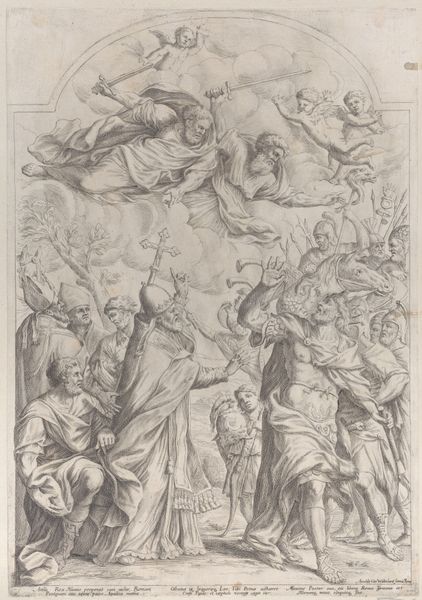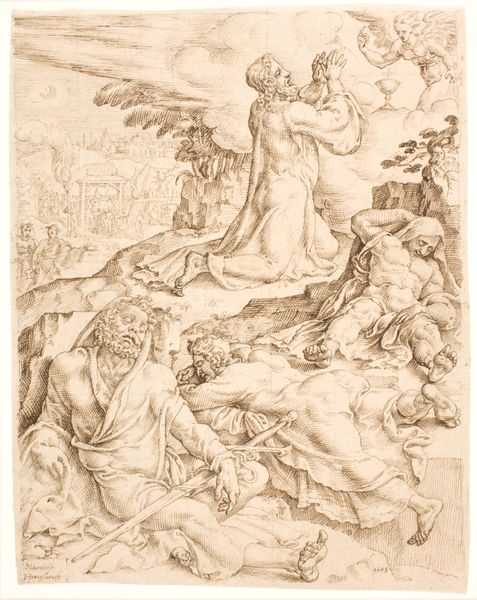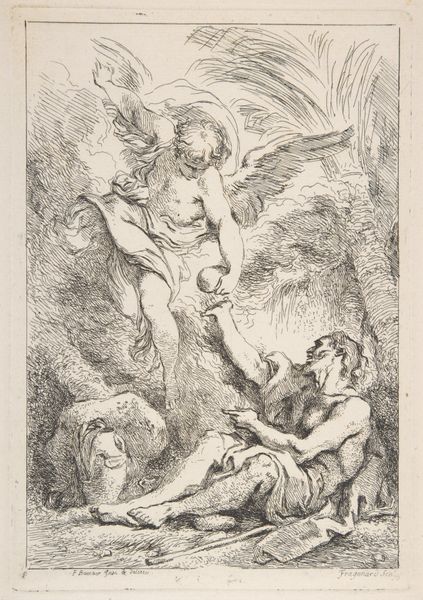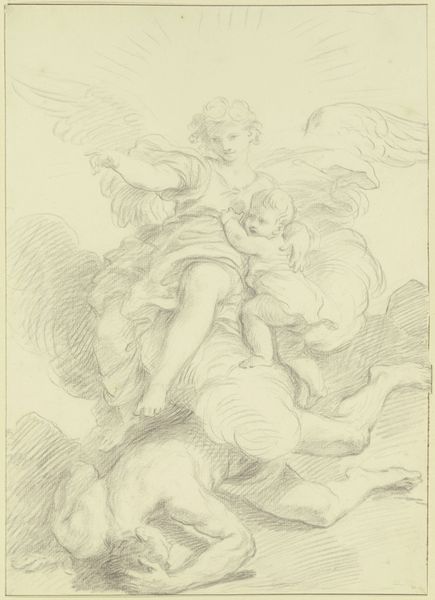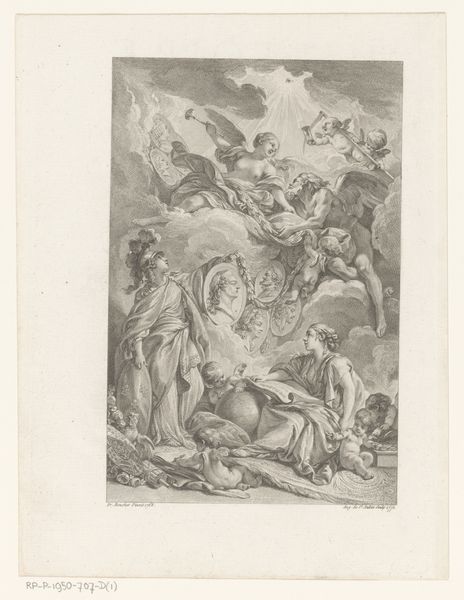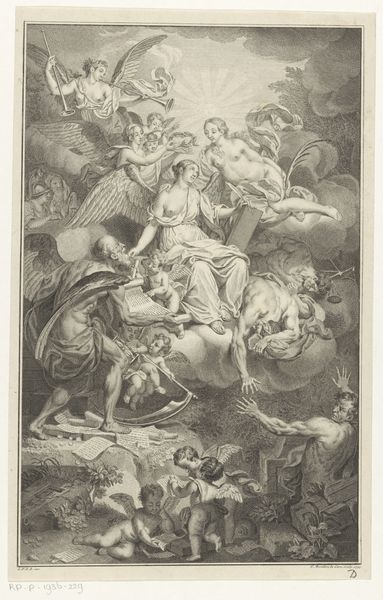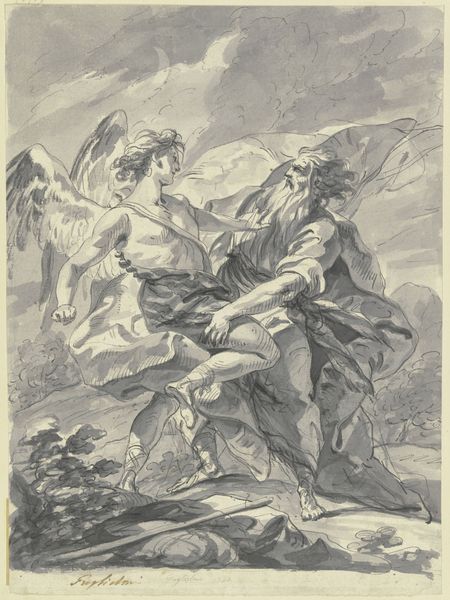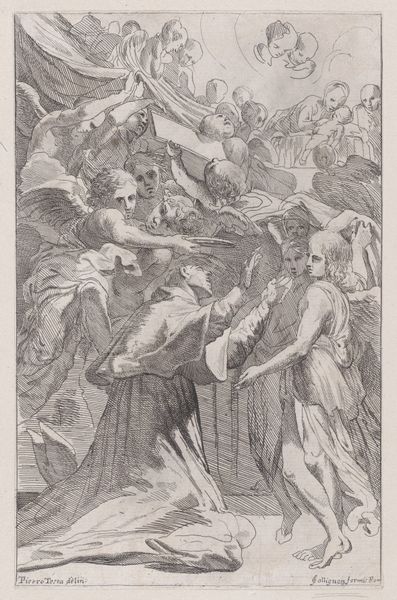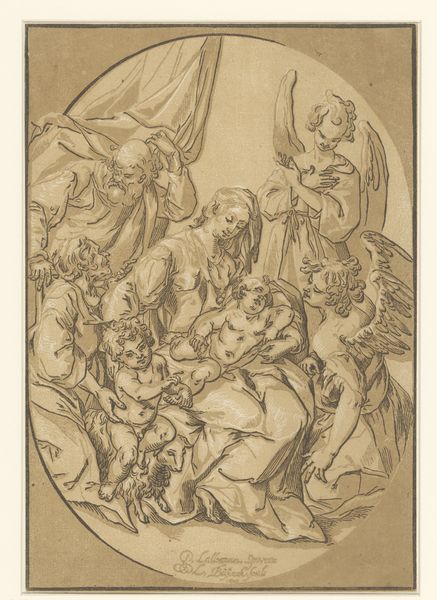
print, etching
#
allegory
#
baroque
# print
#
etching
#
figuration
#
line
#
history-painting
Dimensions: height 369 mm, width 253 mm
Copyright: Rijks Museum: Open Domain
Editor: Here we have Domenico Maria Viani's etching "Heilige Filippo Benizi," created sometime between 1678 and 1711. The swirling figures rising towards the heavens create such a sense of drama and movement, really pulling you in. What can you tell me about it? Curator: Well, considering its Baroque origins, that dramatic pull is no accident. Beyond the purely religious reading, it's interesting to consider the social and political role the Church played. Viani, working in a period of significant social stratification, crafts an image that reinforces established power structures by visually reinforcing the sainthood, imbuing it with divine approval. Editor: So, it’s less about personal piety and more about reinforcing institutional power? Curator: Exactly. Consider the glorification of Filippo Benizi here. It is not just about religious devotion but about the institutional validation of the Servite Order, which he represented. How does this image function as propaganda, both celebrating and legitimizing the order’s influence within the complex social landscape of its time? Editor: I see what you mean. The angels almost seem like they're staging a production, very deliberately showing the "correct" way to view this figure. Did Viani consciously think about how people of different classes or genders might see this? Curator: It's hard to know Viani's inner thoughts, of course, but images like this did dictate social norms. Who had access to these prints, and how did it affect their understanding of power, piety, and their place in society? This print also prompts consideration of who *wasn't* represented or considered worthy of such glorification. Editor: That really shifts my understanding. I was focused on the artistic skill, but seeing the layers of social messaging is eye-opening. Curator: Precisely. Art doesn't exist in a vacuum. It’s always communicating, consciously or unconsciously, about power, identity, and social values. Editor: Thanks! That's given me so much more to think about. Curator: Likewise. Considering those contexts definitely enhances how we engage with Viani’s impressive skill.
Comments
No comments
Be the first to comment and join the conversation on the ultimate creative platform.

